A Numerical Study of the Fractional Order Dynamical Nonlinear Susceptible Infected and Quarantine Differential Model Using the Stochastic Numerical Approach
Abstract
:1. Introduction
2. Mathematical Design of the Fractional Order SIQ System
3. Novel Topographies and Outline of the Stochastic Solvers
- A novel design of the fractional order SIQ model based on the coronavirus with the lockdown effects is presented;
- The stochastic measures have not been applied before to solve the fractional order SIQ model based on the coronavirus with the lockdown effects;
- The numerical investigations through the stochastic paradigms are successfully presented using the fractional order SIQ mathematical model;
- AI with the design of LMBS-NNs is presented to solve the nonlinear fractional order SIQ mathematical model;
- Three different fractional order variations based on the SIQ model have been numerically solved to authenticate the reliability of the proposed scheme;
- The brilliance of the stochastic computing solver based LMBS-NNs is provided using the comparison of the obtained and reference (Adams–Bashforth–Moulton) solutions;
- The accuracy of the scheme is observed through the absolute error (AE) performances that is achieved in good order to solve the fractional order SIQ mathematical model;
- The regression, STs, MSE and EHs and correlation performances approve the dependability and constancy of the designed LMBS-NNs to solve the fractional order SIQ mathematical model.
4. Proposed Procedures: LMBS-NNs
5. Results through the Designed Method
- Case 1: Consider a fractional order coronavirus based SIQ mathematical model by taking the appropriate values , , , , , , , k = 0.1, , , and is provided as:
- Case 2: Consider a fractional order coronavirus based SIQ mathematical model by taking the appropriate values , , , , , , , k = 0.1, , , and is provided as:
- Case 3: Consider a fractional order coronavirus based SIQ mathematical model by taking the appropriate values , , , , , , , , , , and is provided as:
6. Concluding Remarks
Author Contributions
Funding
Institutional Review Board Statement
Informed Consent Statement
Data Availability Statement
Conflicts of Interest
References
- Guerrero–Sánchez, Y.; Umar, M.; Sabir, Z.; Guirao, J.L.G.; Raja, M.A.Z. Solving a class of biological HIV infection model of latently infected cells using heuristic approach. Discret. Contin. Dyn. Syst. 2021, 14, 3611. [Google Scholar] [CrossRef]
- Umar, M.; Sabir, Z.; Amin, F.; Guirao, J.L.G.; Raja, M.A.Z. Stochastic numerical technique for solving HIV infection model of CD4+ T cells. Eur. Phys. J. Plus 2020, 135, 405. [Google Scholar] [CrossRef]
- Berge, T.; Lubuma, J.-S.; Moremedi, G.; Morris, N.; Kondera-Shava, R. A simple mathematical model for Ebola in Africa. J. Biol. Dyn. 2017, 11, 42–74. [Google Scholar] [CrossRef] [PubMed] [Green Version]
- Bhola, J.; Venkateswaran, V.R.; Koul, M. Corona epidemic in Indian context: Predictive mathematical modelling. MedRxiv 2020. [Google Scholar] [CrossRef] [Green Version]
- Li, Q.; Guan, X.; Wu, P.; Wang, X.; Zhou, L.; Tong, Y.; Ren, R.; Leung, K.S.; Lau, E.H.; Wong, J.Y.; et al. Early transmission dynamics in Wuhan, China, of novel coronavirus–infected pneumonia. N. Engl. J. Med. 2020, 382, 1199–1207. [Google Scholar] [CrossRef] [PubMed]
- Bernasconi, A.; Grandi, S. A Conceptual Model for Geo-Online Exploratory Data Visualization: The Case of the COVID-19 Pandemic. Information 2021, 12, 69. [Google Scholar] [CrossRef]
- Kucharski, A.J.; Russell, T.W.; Diamond, C.; Liu, Y.; Edmunds, J.; Funk, S.; Eggo, R.M.; Sun, F.; Jit, M.; Munday, J.D.; et al. Early dynamics of transmission and control of COVID-19: A mathematical modelling study. Lancet Infect. Dis. 2020, 20, 553–558. [Google Scholar] [CrossRef] [Green Version]
- Spiteri, G.; Fielding, J.; Diercke, M.; Campese, C.; Enouf, V.; Gaymard, A.; Bella, A.; Sognamiglio, P.; Moros, M.J.S.; Riutort, A.N.; et al. First cases of coronavirus disease 2019 (COVID-19) in the WHO European Region, 24 January to 21 February 2020. Eurosurveillance 2020, 25, 2000178. [Google Scholar] [CrossRef] [PubMed] [Green Version]
- Rhodes, T.; Lancaster, K. Mathematical models as public troubles in COVID-19 infection control: Following the numbers. Health Sociol. Rev. 2020, 29, 177–194. [Google Scholar] [CrossRef] [PubMed]
- Benvenuto, D.; Giovanetti, M.; Vassallo, L.; Angeletti, S.; Ciccozzi, M. Application of the ARIMA model on the COVID-2019 epidemic dataset. Data Brief. 2020, 29, 105340. [Google Scholar] [CrossRef] [PubMed]
- Mustafa, S.K.; Ahmad, M.A.; Sotnik, S.; Zeleniy, O.; Lyashenko, V.; Alzahrani, O. Brief review of the mathematical models for analyzing and forecasting transmission of COVID-19. J. Crit. Rev. 2020, 7, 4206–4210. [Google Scholar]
- Sivakumar, A. Review of mathematical models to predict the rate of spread and control of COVID-19 in India. Bullet. World Health Organ. 2020. [Google Scholar] [CrossRef]
- Nesteruk, I. Estimates of the COVID-19 pandemic dynamics in Ukraine based on two data sets. Medrxiv 2021. [Google Scholar] [CrossRef]
- Thompson, R.N. Epidemiological models are important tools for guiding COVID-19 interventions. BMC Med. 2020, 18, 152. [Google Scholar] [CrossRef] [PubMed]
- Libotte, G.B.; Lobato, F.S.; Platt, G.M.; Neto, A.J.S. Determination of an optimal control strategy for vaccine administration in COVID-19 pandemic treatment. Comput. Methods Programs Biomed. 2020, 196, 105664. [Google Scholar] [CrossRef] [PubMed]
- Sadiq, I.Z.; Abubakar, F.S.; Dan-Iya, B.I. Role of nanoparticles in tackling COVID-19 pandemic: A bio-nanomedical approach. J. Taibah Univ. Sci. 2021, 15, 198–207. [Google Scholar] [CrossRef]
- Gumel, A.B.; Iboi, E.A.; Ngonghala, C.N.; Elbasha, E.H. A primer on using mathematics to understand COVID-19 dynamics: Modeling, analysis and simulations. Infect. Dis. Model. 2021, 6, 148–168. [Google Scholar] [CrossRef] [PubMed]
- Ortenzi, F.; Albanese, E.; Fadda, M. A Transdisciplinary Analysis of COVID-19 in Italy: The Most Affected Country in Europe. Int. J. Environ. Res. Public Health 2020, 17, 9488. [Google Scholar] [CrossRef]
- Sánchez, Y.G.; Sabir, Z.; Guirao, J.L.G. Design of a nonlinear sitr fractal model based on the dynamics of a novel coronavirus (COVID-19). Fractals 2020, 28, 2040026. [Google Scholar] [CrossRef]
- Sabir, Z.; Umar, M.; Raja, M.A.Z.; Baleanu, D. Applications of gudermannian neural network for solving the sitr fractal system. Fractals 2021, 29. [Google Scholar] [CrossRef]
- Moore, S.; Hill, E.M.; Tildesley, M.J.; Dyson, L.; Keeling, M.J. Vaccination and non-pharmaceutical interventions for COVID-19: A mathematical modelling study. Lancet Infect. Dis. 2021, 21, 793–802. [Google Scholar] [CrossRef]
- Umar, Y. Theoretical studies of the rotational and tautomeric states, electronic and spectroscopic properties of favipiravir and its structural analogues: A potential drug for the treatment of COVID-19. J. Taibah Univ. Sci. 2020, 14, 1613–1625. [Google Scholar] [CrossRef]
- Anirudh, A. Mathematical modeling and the transmission dynamics in predicting the Covid-19—What next in combating the pandemic. Infect. Dis. Model. 2020, 5, 366–374. [Google Scholar] [CrossRef]
- Chen, X.; Zhang, A.; Wang, H.; Gallaher, A.; Zhu, X. Compliance and containment in social distancing: Mathematical modeling of COVID-19 across townships. Int. J. Geogr. Inf. Sci. 2021, 35, 446–465. [Google Scholar] [CrossRef]
- Zhang, Z.; Zeb, A.; Hussain, S.; Alzahrani, E. Dynamics of COVID-19 mathematical model with stochastic perturbation. Adv. Differ. Equ. 2020, 2020, 451. [Google Scholar] [CrossRef] [PubMed]
- Soumia, M.; Hanane, Z.; Benaissa, M.; Younes, F.Z.; Chakib, A.; Mohammed, B.; Mohamed, B. Towards potential inhibitors of COVID-19 main protease Mpro by virtual screening and molecular docking study. J. Taibah Univ. Sci. 2020, 14, 1626–1636. [Google Scholar] [CrossRef]
- Bhadauria, A.S.; Pathak, R.; Chaudhary, M. A SIQ mathematical model on COVID-19 investigating the lockdown effect. Infect. Dis. Model. 2021, 6, 244–257. [Google Scholar] [CrossRef] [PubMed]
- Yuanlei, S.; Almohsen, B.; Sabershahraki, M.; Issakhov, A.; Raja, M.A.Z. Nanomaterial migration due to magnetic field through a porous region utilizing numerical modeling. Chem. Phys. Lett. 2021, 785, 139162. [Google Scholar] [CrossRef]
- Ghanbari, B.; Djilali, S. Mathematical analysis of a fractional-order predator-prey model with prey social behavior and infection developed in predator population. Chaos Solitons Fractals 2020, 138, 109960. [Google Scholar] [CrossRef]
- Ghanbari, B.; Djilali, S. Mathematical and numerical analysis of a three-species predator-prey model with herd behavior and time fractional-order derivative. Math. Methods Appl. Sci. 2020, 43, 1736–1752. [Google Scholar] [CrossRef]
- Bolboacă, S.D.; Jäntschi, L. Sensitivity, specificity, and accuracy of predictive models on phenols toxicity. J. Comput. Sci. 2014, 5, 345–350. [Google Scholar] [CrossRef]
- Jäntschi, L.; Bolboacă, S.D.; Sestraş, R.E. Meta-heuristics on quantitative structure-activity relationships: Study on polychlorinated biphenyls. J. Mol. Model. 2010, 16, 377–386. [Google Scholar] [CrossRef] [PubMed]
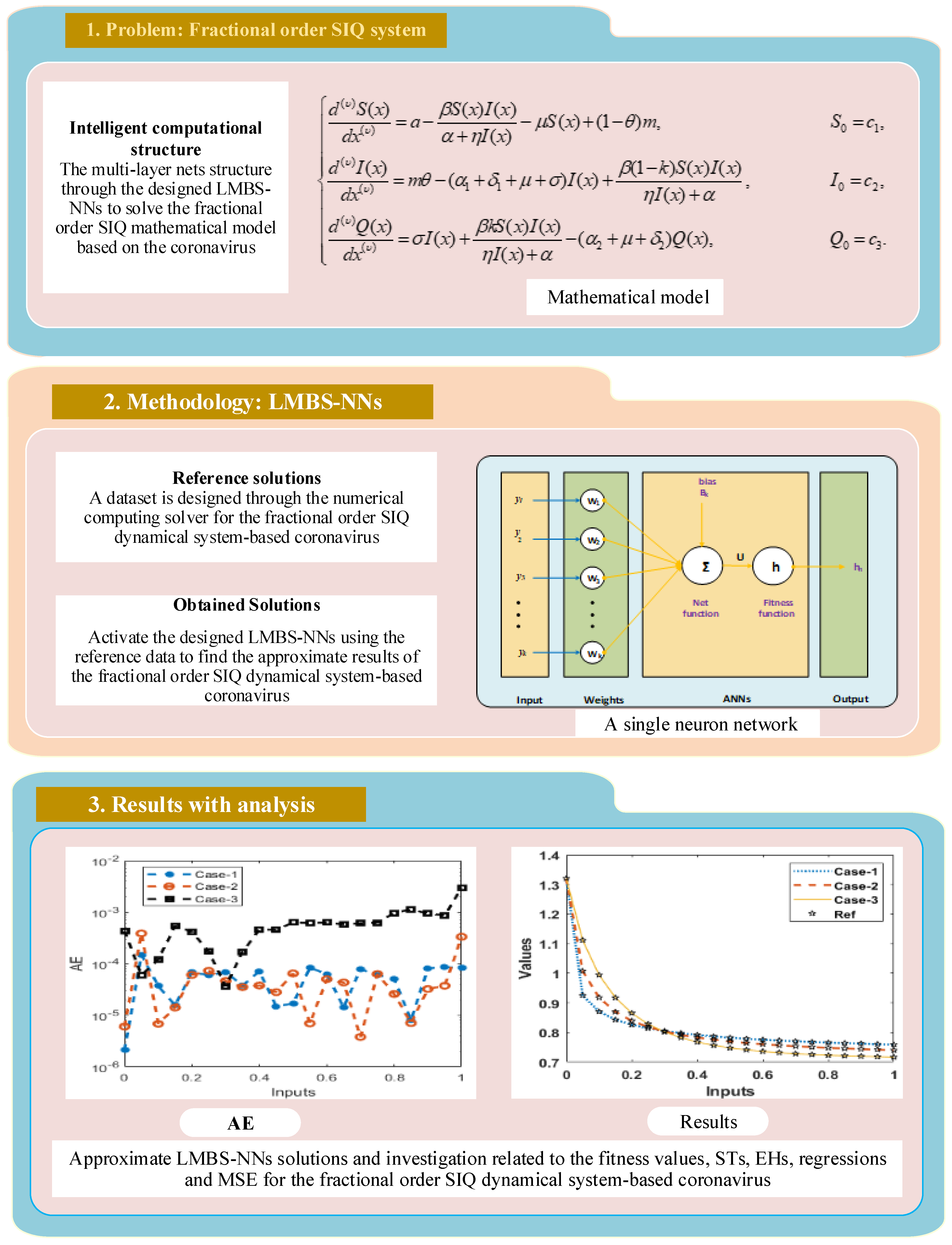
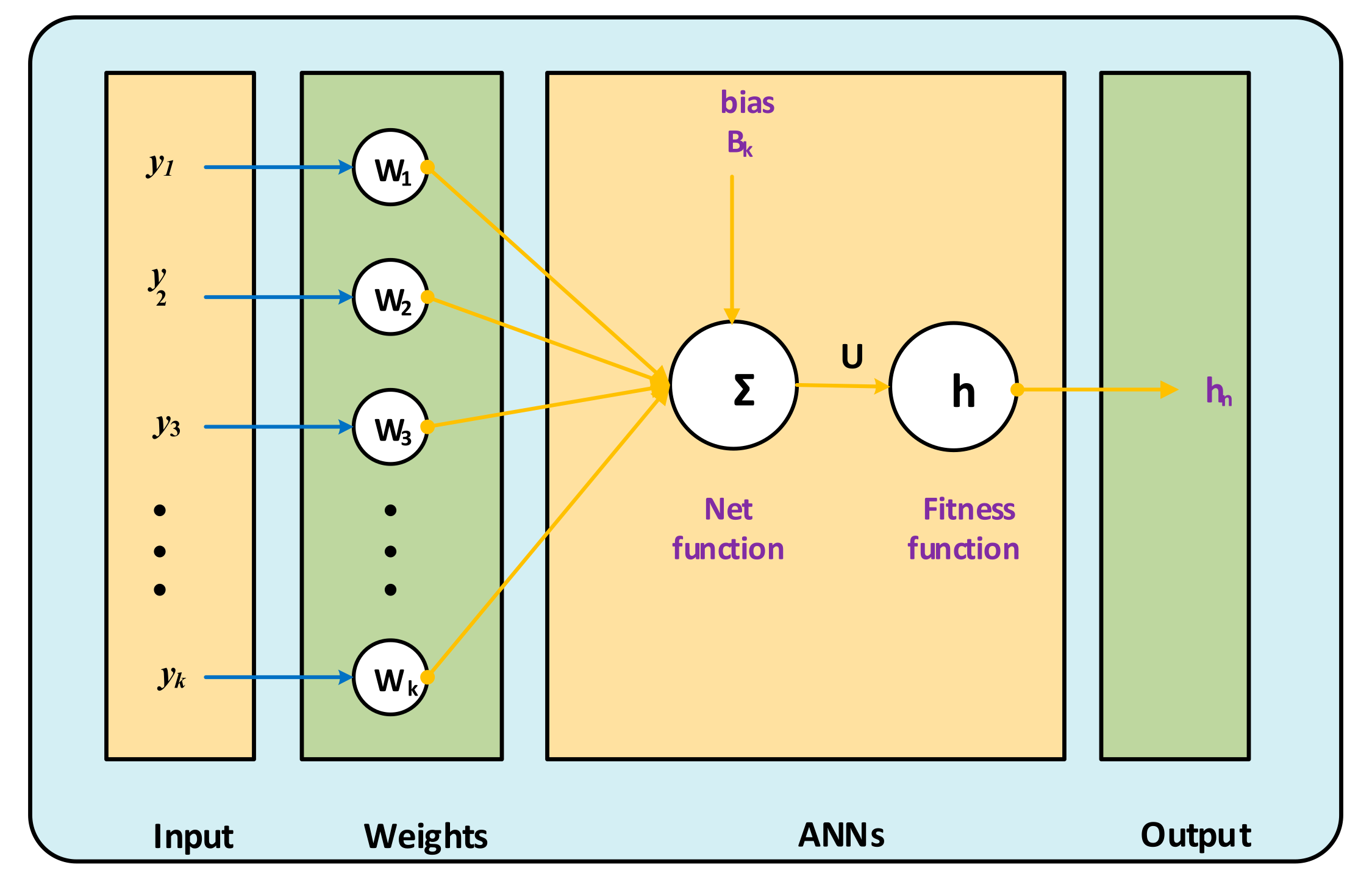

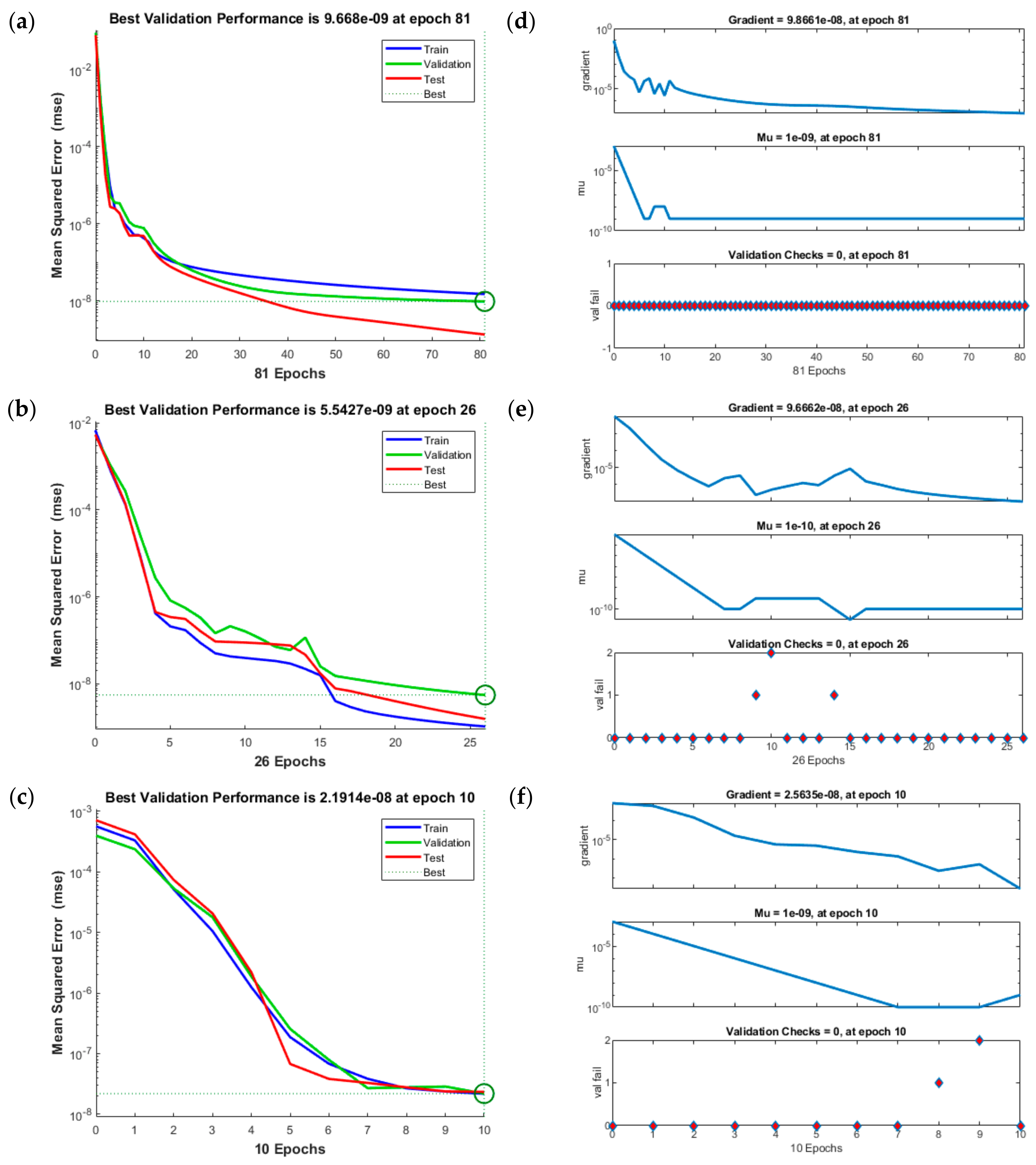
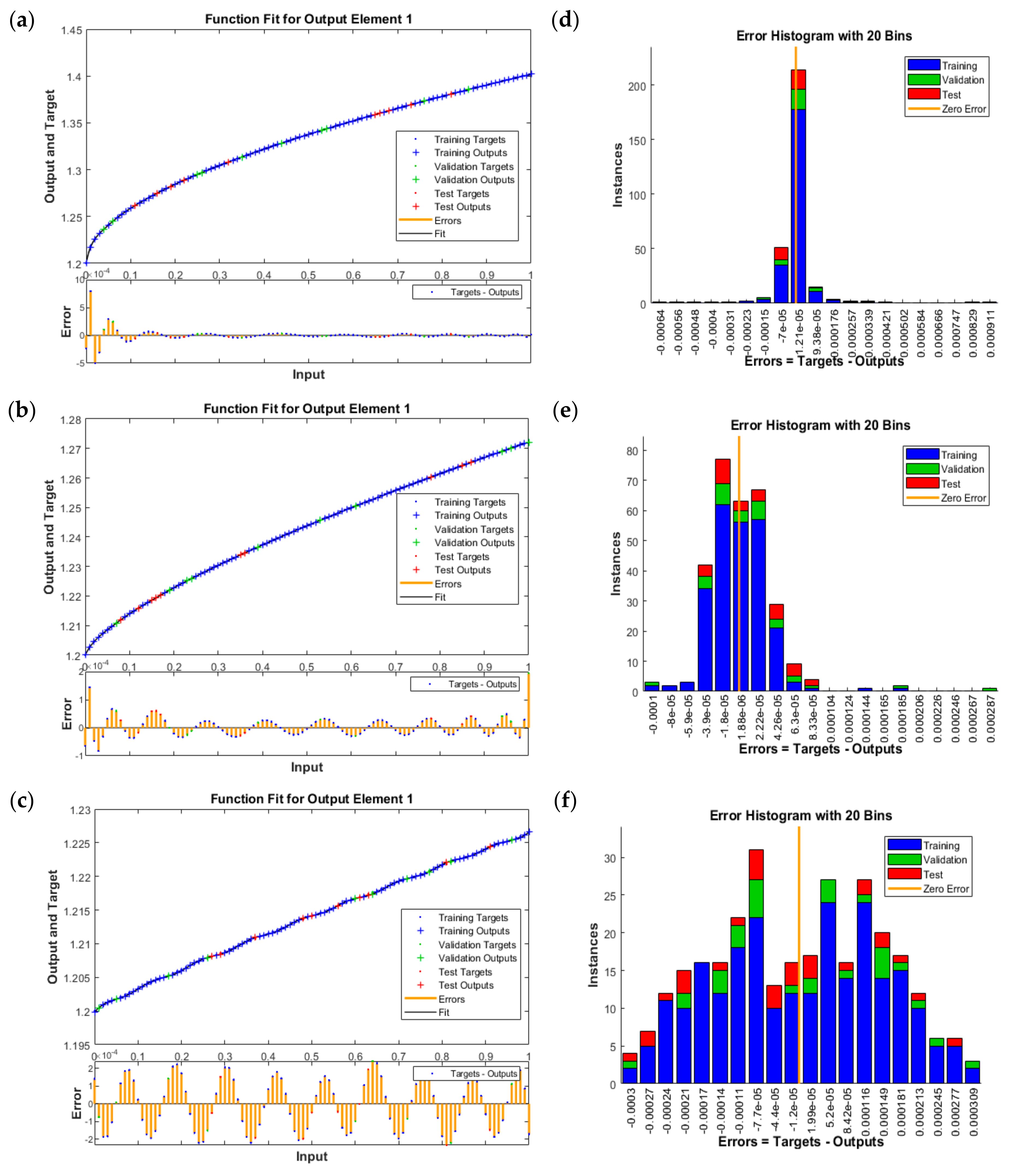

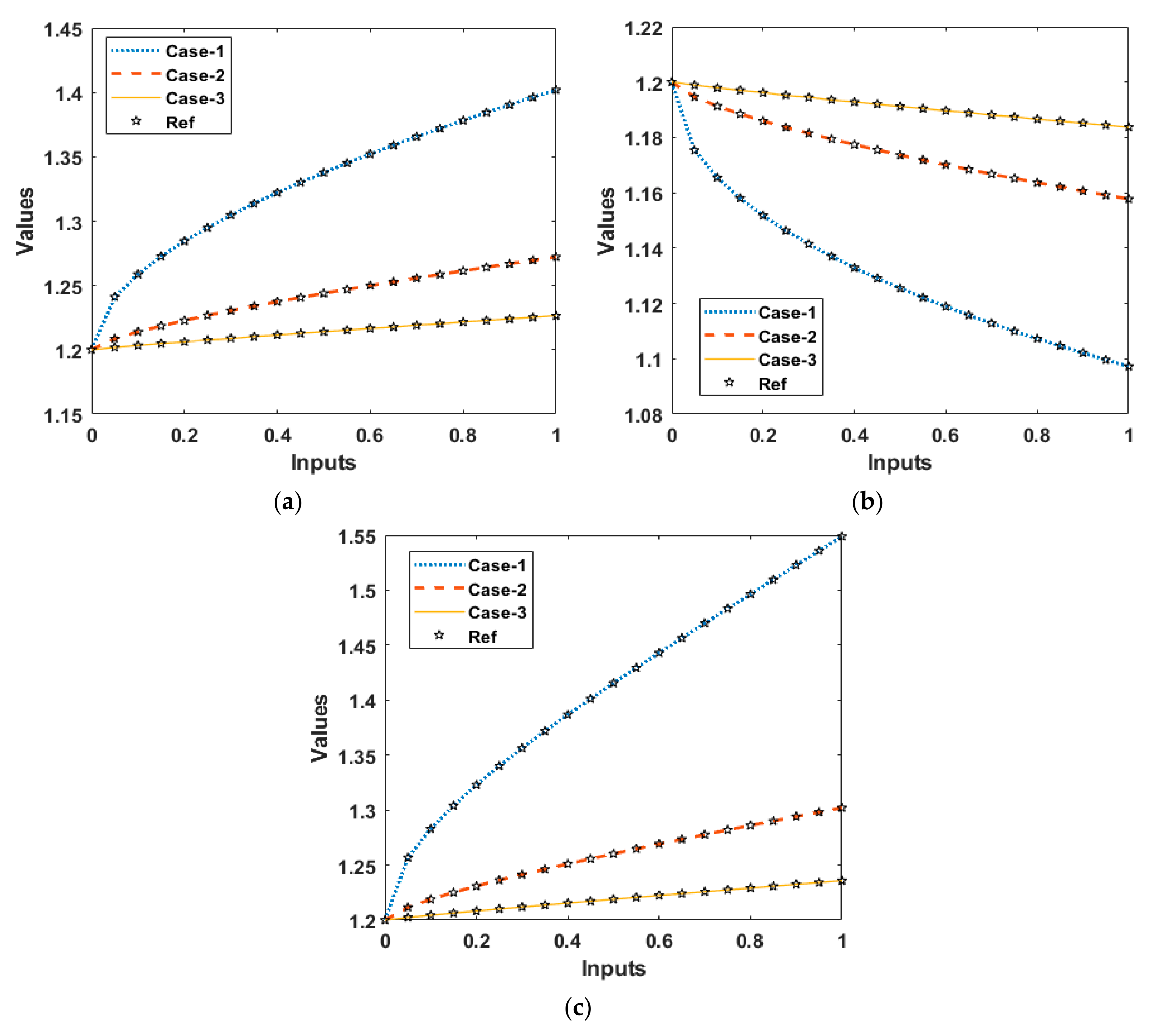
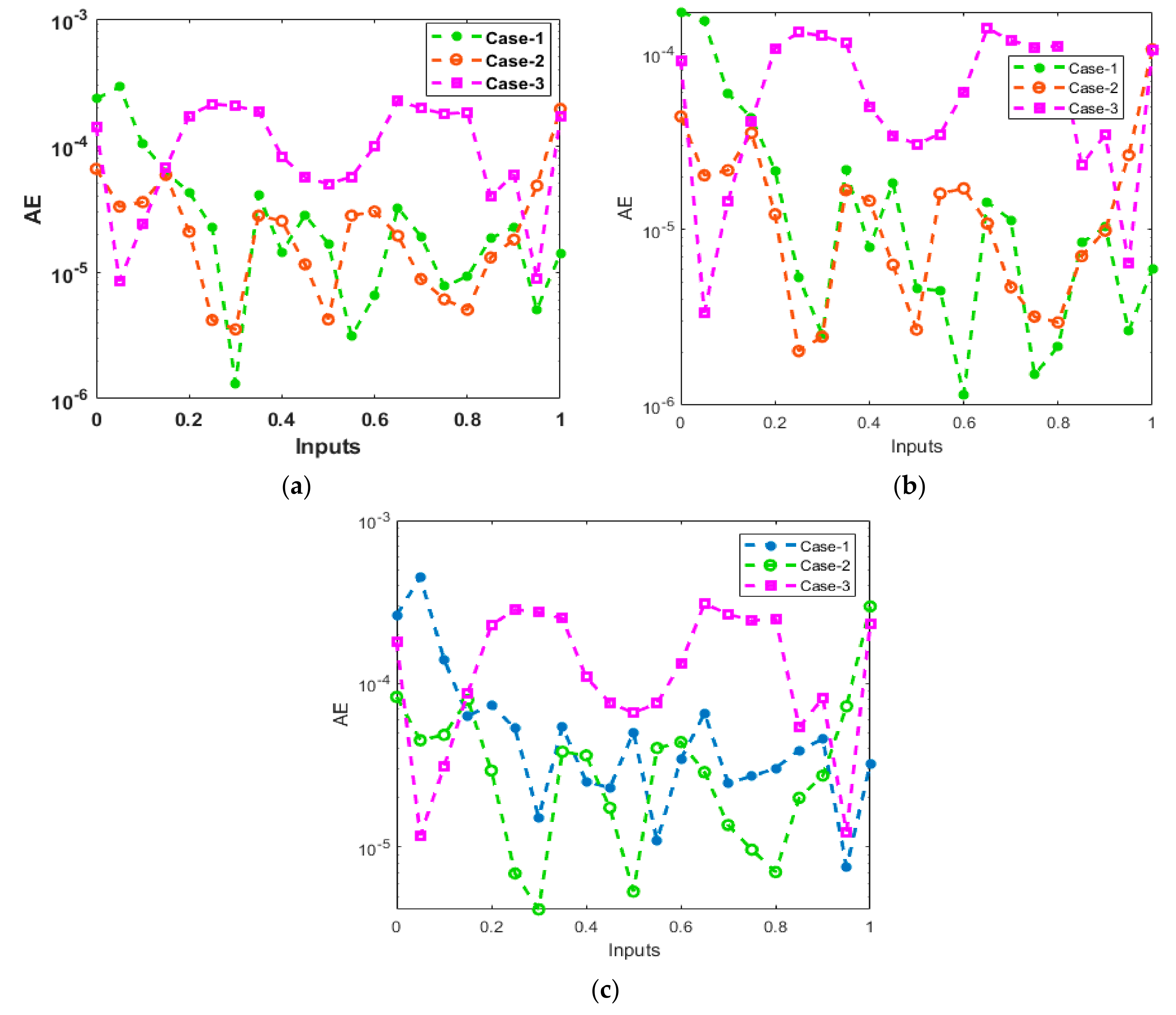
| Parameters | Details |
|---|---|
| Recruitment rate | |
| Half saturation constant | |
| Positive value | |
| m | Migrants number |
| Transmission infection rate | |
| Natural death rate | |
| Recovery of infective population | |
| k | Contact tracing rate |
| Infected migrants’ rate | |
| 0.59 per day | |
| Disease associated quarantine’s population death rate | |
| Disease related infective population’s death rate | |
| Quarantined population recovered rate | |
| c1, c2 and c3 | Contents: Initial conditions (ICs) |
| Case | MSE | Gradient | Performance | Epoch | Mu | Time | ||
|---|---|---|---|---|---|---|---|---|
| Training | Testing | Validation | ||||||
| 1 | 2.01 × 10−8 | 4.14 × 10−6 | 1.23 × 10−8 | 5.17 × 10−6 | 1.98 × 10−8 | 300 | 1 × 10−8 | 06 |
| 2 | 2.37 × 10−9 | 1.64 × 10−7 | 5.17 × 10−9 | 1.91 × 10−6 | 2.38 × 10−9 | 1000 | 1 × 10−8 | 06 |
| 3 | 1.45 × 10−7 | 5.21 × 10−6 | 1.92 × 10−7 | 2.01 × 10−5 | 1.37 × 10−7 | 161 | 1 × 10−7 | 03 |
Publisher’s Note: MDPI stays neutral with regard to jurisdictional claims in published maps and institutional affiliations. |
© 2022 by the authors. Licensee MDPI, Basel, Switzerland. This article is an open access article distributed under the terms and conditions of the Creative Commons Attribution (CC BY) license (https://creativecommons.org/licenses/by/4.0/).
Share and Cite
Botmart, T.; Sabir, Z.; Raja, M.A.Z.; Weera, W.; Sadat, R.; Ali, M.R. A Numerical Study of the Fractional Order Dynamical Nonlinear Susceptible Infected and Quarantine Differential Model Using the Stochastic Numerical Approach. Fractal Fract. 2022, 6, 139. https://doi.org/10.3390/fractalfract6030139
Botmart T, Sabir Z, Raja MAZ, Weera W, Sadat R, Ali MR. A Numerical Study of the Fractional Order Dynamical Nonlinear Susceptible Infected and Quarantine Differential Model Using the Stochastic Numerical Approach. Fractal and Fractional. 2022; 6(3):139. https://doi.org/10.3390/fractalfract6030139
Chicago/Turabian StyleBotmart, Thongchai, Zulqurnain Sabir, Muhammad Asif Zahoor Raja, Wajaree Weera, Rahma Sadat, and Mohamed R. Ali. 2022. "A Numerical Study of the Fractional Order Dynamical Nonlinear Susceptible Infected and Quarantine Differential Model Using the Stochastic Numerical Approach" Fractal and Fractional 6, no. 3: 139. https://doi.org/10.3390/fractalfract6030139
APA StyleBotmart, T., Sabir, Z., Raja, M. A. Z., Weera, W., Sadat, R., & Ali, M. R. (2022). A Numerical Study of the Fractional Order Dynamical Nonlinear Susceptible Infected and Quarantine Differential Model Using the Stochastic Numerical Approach. Fractal and Fractional, 6(3), 139. https://doi.org/10.3390/fractalfract6030139






